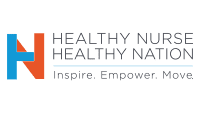Individual community needs require tailored interventions.
Based on stable historical trends, we continue to see geographic variation in the incidence of heart disease across the United States. Outcome data have taught us that where we live strongly predicts our health status. As nursing professionals, we’ve been consistent with our messaging about how to reduce factors associated with the risk of heart disease. However, according to the Centers for Disease Control and Prevention, messaging efforts haven’t significantly lowered morbidity and mortality rates since 2011, when the rate of decrease gradually began to slow. Perhaps we’re just not willing to grapple with the more complex issue—healthcare system inequity.
As I discuss these incidence rates and trends with my students, they continue to be naïve about the fact that the U.S. healthcare system operates a business. My nursing students typically make assumptions about healthcare access based on their lived experiences within their local communities. To help them better understand the impact of geographic variation, one of my assignments requires students to compare local morbidity and mortality data with that from other regions. Upon completing the assignment, they’re shocked by the differences and become more inquisitive.
We then consider how social determinants of health drive outcome data. We discuss issues such as food deserts, pollution, crime, and poverty (to name a few of the social determinants). These social issues intrigue my students and they begin to understand the importance of advocacy to professional nursing practice.
Improving the health of mothers living in poverty
Addressing implicit bias in nursing: What color is your lens?
Taking a deep dive into these areas helps students build knowledge about the interrelationships between public health and healthcare delivery. Understanding how structural and financial barriers regulate healthcare access drives home the concept that, in the United States, we’re a society with structured systemic biases within our healthcare system. By default, our system design regulates access based on historical norms, values, and prejudices. We certainly can build a compelling case about how wealth has created a structure of privileged healthcare access.
These micro-discussions serve only to create tiny ripples in an enormous sea of complexity but can spark a passion for nursing as a vocation. It reminds me of the critical role each one of us plays in rekindling ingenuity, compassion, and benevolence within the next generation of nurses. Inspiring one another to reflect on these significant issues keeps us in touch with why we consistently strive to improve nursing practice.
I’ve written several articles and provided podium presentations on the need to connect theory to practice. I now think the subject requires further expansion to include connection to communities in the COVID era. Nursing transformation wasn’t at the behest of COVID but as a result of our professional desire to develop evidence-based nursing practice. The pandemic forced healthcare systems to rapidly change or embrace different care delivery technologies as a result of social isolation. The question is whether nursing education made the necessary strides to reevaluate this rapid evolution and determine whether practice changes meet current needs and expectations.
If we aren’t fully meeting the current needs and expectations, my challenge to myself and to you is to explain the why. As professional nurses, we must tailor interventions based on the individual needs of the neighborhoods we care for. Each day, we have an opportunity to build an enduring legacy. My mentor, Mary Lou Bond, PhD, RN, CNE, ANEF, FAAN, provided the following keys to my pedagogical practice—“encourage, empower, and elevate.”
Jose Alejandro-White is a nurse scientist at University of Texas Southwestern Medical Center in Dallas.
American Nurse Journal. 2024; 19(4). Doi: 10.51256/ANJ042452
Reference
Centers for Disease Control and Prevention. Division for Heart Disease and Stroke Prevention: Data trends and maps website. July 19, 2023. cdc.gov/dhdsp/maps/dtm/index.html


















